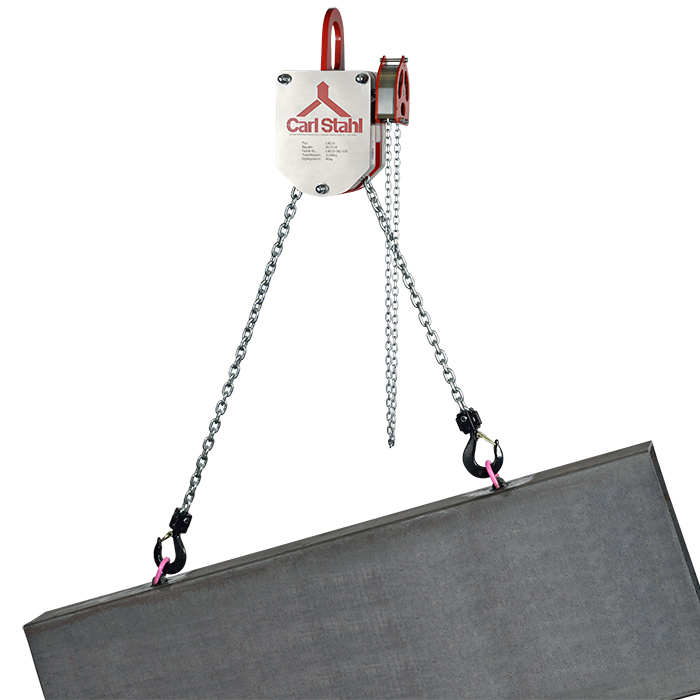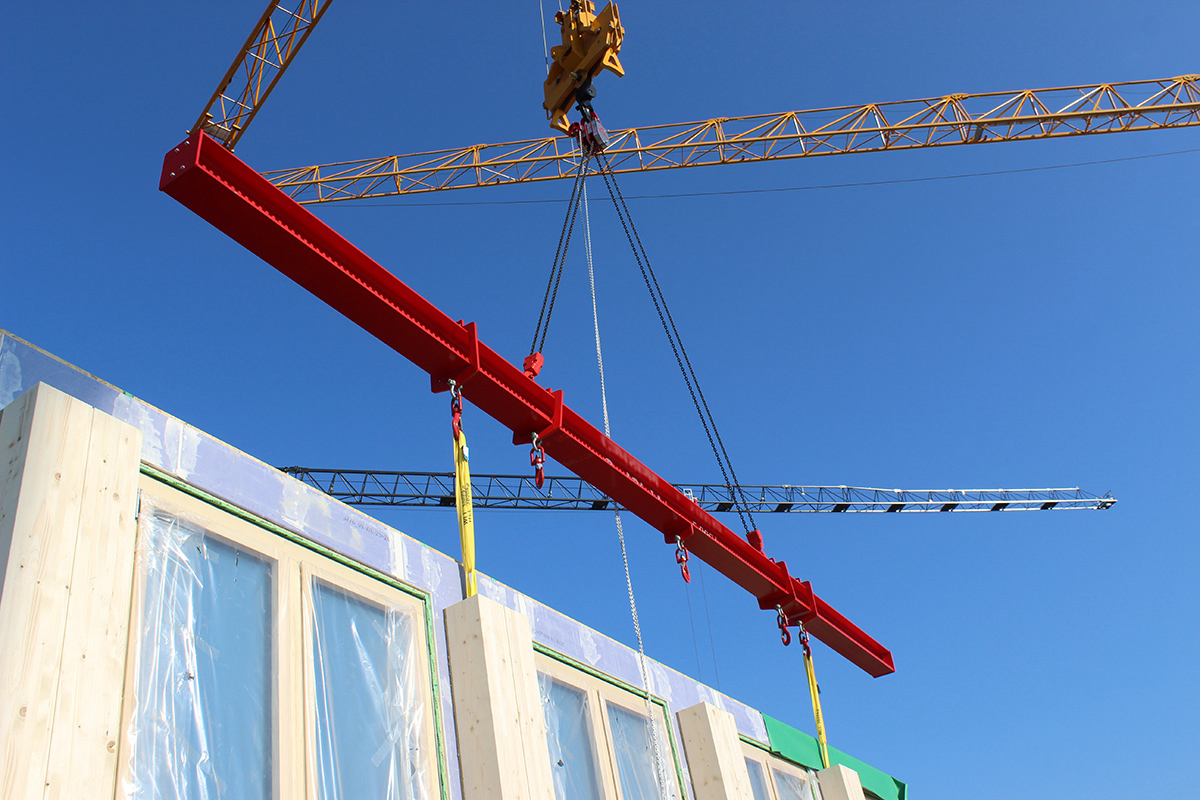Heavy Loads from a New Perspective
Tilt stands, load balancers, and turning devices are specialized lifting accessories designed to allow controlled repositioning and balanced weight distribution of heavy loads typically suspended on two lifting points. They are used wherever safe, ergonomic, and precise movements are required when handling loads — whether for turning, tilting, or leveling asymmetrical objects.
These devices play a key role in minimizing accident risks, speeding up workflows, and preventing material damage. Standards such as DIN EN 13155, DGUV Rule 109-017, and the German Ordinance on Industrial Safety and Health (BetrSichV) form the safety-related basis for the planning, use, and inspection of such equipment.
The handling of prefabricated building elements on the construction site
Prefabricated house elements must be unloaded on the construction site and assembled at their destination. As the elements also have different centre of gravity positions due to their different designs, this often involves a great deal of effort. Components have to be lifted and set down again in order to adjust the chain shorteners correctly. At the latest when the prefabricated house element is installed, it becomes clear whether or not the work was done correctly beforehand. Holes and pins must be joined with millimetre precision. If the component hangs askew, often only the use of assembly irons and a lot of muscle power will help. In the worst case, the component has to be put back on the lorry and reattached.
Align prefabricated house elements correctly using a load levelling device

With the help of a load tilting device, the prefabricated house element can be lifted from the lorry without much preparatory work and aligned freely suspended on the crane. This saves time and labour processes at lofty heights. The inclination can be readjusted at the installation site and even changed during the insertion of tenons into the hole. Until everything fits. This makes work faster, safer and easier. The load tilter makes the entire installation process significantly faster, as the loads do not have to be repeatedly set down and chain shorteners readjusted. The load tilter also makes the installation process safer, as depending on the conditions, the chain shorteners may need to be positioned at a higher level to be rehung, which could potentially lead to a risk of falling. It makes work easier, as less force is required for installation due to the simpler and more precise alignment.






Technical Background for Handling
With load tilting and traversing devices, the load is attached at suitable lifting points. The extent of possible tilting depends significantly on the center of gravity and the position of the attachment points. Physically, a load can only be tilted between the states "center of gravity below attachment point A" and "center of gravity below attachment point B."
With load turning devices, rotation can (theoretically) be continuous — but only with suitable load geometry. One critical factor: the rolling geometries of the load-bearing surfaces, such as lifting slings, must be identical. Uneven supports can lead to uncontrolled load movements.
Safety and Risk Prevention
Using balancing and turning devices requires trained personnel and thorough risk assessment. Key safety considerations include:
- Check center of gravity shifts: Before use, determine how the load’s center of gravity will change during the lift.
- Ensure stable load positioning: The load must remain stable throughout all movement phases. Unfavorable geometry — especially with turning devices — can lead to instability.
- Observe general lifting safety: As with all heavy load handling, appropriate PPE, clear visual communication, and secured work zones are essential.
FAQ's
Can the load tilting device only be used for prefabricated house elements?
No, the load tilter can be used wherever loads with an off-centre centre of gravity need to be brought into an aligned assembly position.
For which target group is the load leveller interesting?
The load leveller is of interest to construction and assembly companies as well as manufacturers of prefabricated building elements. The load tilting device can also be adapted to complete residential modules and containers. Away from construction sites, the load tilter is interesting for the target groups of vehicle construction, mechanical engineering, assembly and maintenance work
Is the load tilting device a lifting device?
No, the load tilter is a load handling attachment that is manufactured in-house by Carl Stahl in accordance with DIN EN 13155.
In which load capacities is the load tilting device available?
The load tilting device from Carl Stahl is available in the load capacities 500 kg, 1,500 kg, 3,000 kg and 6,000 kg.
